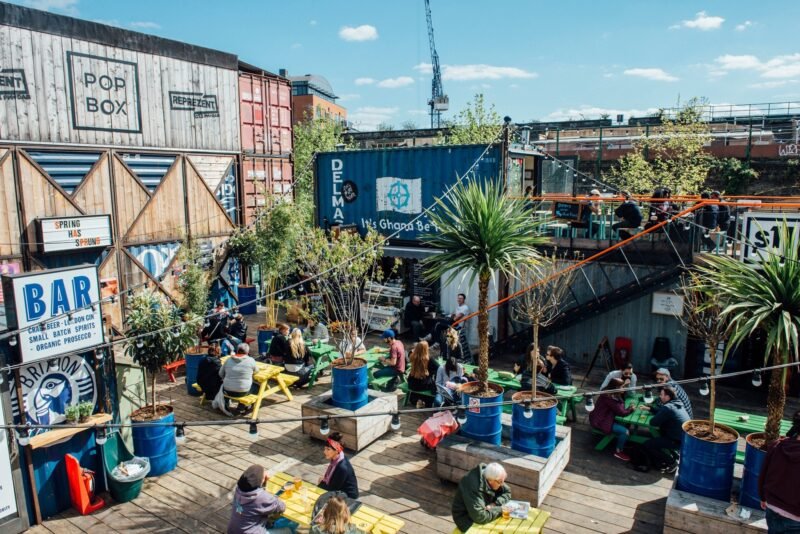CARTopia: Portland’s Food Cart Revolution
When boyfriend and I told our relatives we would go to Oregon, USA, for our long-awaited holidays, they were all surprised. What's happening there? Why not a sunny place after an imaginary summer in Amsterdam?
When we came back from our 3-week trip with a tan and told my father-in-law, a French chef, that we found our Food Mecca in Portland, Oregon, he did not believe us, and thought our palates are far too young to seize the difference between street food and gastronomy. Europeans might not be aware of Portland’s food scene, but many US Cities are trying to figure out how to replicate its model. Over the past decade, media and food critics have all acknowledged Portland as a destination for food lovers. ‘Top Places to Eat in Portland’ by Guardian or New York Times do not only highlight brick-and-mortar restaurants but also gourmet food carts. To find our way amongst the 500 (600?) food carts spread throughout the city, we bought CARTopia by Kelly Rodgers and Kelley Roy. This small book is much more than a guide, it is also a fine introduction to the food carts phenomenon. CARTopia helped me to understand the history of food carts in Portland and their unique role in the local economy and the urban landscape.

The Phenomenon
Food carts are mobile kitchens out of which food is served to people from the pedestrian traffic. While many trucks or trailers are truly mobile, most of them occupy sidewalks, parking lots or vacant places. Sometimes solo, sometimes clustered into pods, they invite commuters, business men, families with dogs to sit on cafe stools or communal tables and enjoy great food at a bargain.

Portland did not invent street food or the food cart phenomenon but it ‘offers a unique combination of diversity, quality and value.’ As Guardian writes, “There’s a cart to suit pretty much every palate, whether your preference is for Bosnian or Thai; Czech or Mexican; vegan bowl or bespoke burger.” Another interesting feature of Portland’s food carts is their quirky and colourful design. Interesting enough, design and look of carts do not say anything about the quality of food. Just trust the lines!

Being a tourist, I was amazed by the direct and intimate connection you easily get around the food carts. Five minutes after we arrived at Good Food Here in Portland South-East, I was chatting with the locals while waiting for my order and exchanging smiles while enjoying some comfort food. It’s not just the food. Food Cartology, a study by a group of Portland State University students, concluded that, among other things, “food carts have significant community benefits to neighborhood livability by fostering social interactions, walkability, and by providing interim uses for vacant parcel.”
Why Portland? Why now?
Urbanists, city lovers, foodies, families… Everyone in Portland praises the food carts and contributes to their growth. The supporting community is one of the key success factors of the phenomenon. Portland’s community spirit is also reflected amongst vendors, they help each other, complement each other’s menus to meet the neighbourhood’s tastes and character. Quality of life, walkable and livable streets, sustainability, affordability, entrepreneurship, cultural openness, creativity, craftsmanship are in Portland’s DNA. There is no surprise then that food carts and their DIY model bloomed there.
CARTopia also gives insight into the City’s cart-friendly regulations. No excessive redtape, reasonable start-up costs, loose definition of the term ‘ vehicle’, complaint-driven code compliance… Many cities envy Portland’s food carts scene but they might not be ready for all the political, economic and urbanism changes being thrust upon them. The current recession and the accessible financial model of the food carts encouraged the unemployed to start their business but what makes again Portland specific is the ability of the vendors to ‘constantly push the boundaries of what constitutes street food.’ New graduates from culinary schools, cooks frustrated by the restaurant industry are joining the cart revolution and bring with them their expertise and their willingness to experiment.
How Food Carts Are Changing the Urban Landscape
Even business developers and investors got something out of this sustainable and local trend. With the building slowdown, property owners are glad to get rents from parcels and sites that are hard to develop.

“Up until recently, cart development has tended to be organic in nature, with carts sprouting like wildflowers on vacant parcels. However local business developlers are currently testing new models of small-scale development that use food carts as the main draw.”
Food carts are part of a new way to build the city. They contribute to make a city livable, interpersonal and attractive while compromising with density and space shortage. They encourage us to “think creatively about our local economies and the role we want our city streets to play.” They showed business developers and the city that their business model was viable and positive, they even created growth for satellite industries. The food carts phenomenon will evolve but as the authors write, “we would not want to lose the spontaneity, the creativity, the delicacy and the charm that brought them together in the first place.” Want to learn more? I highly recommend the book. I will also share additional references via Twitter. Stay tuned!
CARTopia, Portland’s Foodcart Revolution
Self-published by Kelly Rodgers and Kelley Roy
2010, Roy Rodgers Press, Portland
168 pages
ISBN: 9780615403885
Price: $25.00 — Click here to order CARTopia



